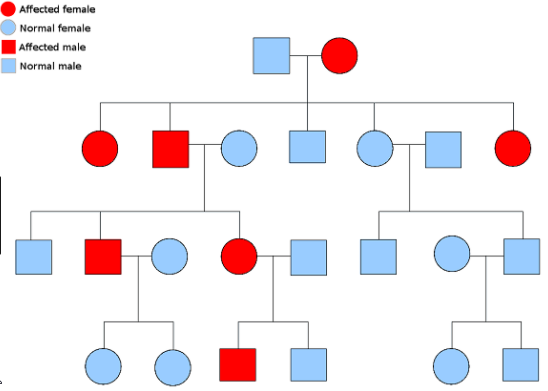Autosomal dominant inheritance

When a parent transmits a disease to his or her children the disease may be an autosomal dominant disorder. The cause can be found in genes. An abnormal gene on one of the autosomal (or non-sex) chromosomes dominates over the other 'normal' gene. One needs only one abnormal or mutated gene to be affected by this type of genetic disorder. A person with an autosomal dominant disorder has a 50 % chance of having an affected child with one mutated gene (dominant gene) and a 50 % chance of having an unaffected child with two normal genes. Examples of autosomal dominant disorders:
- Neurofibromatosis
- Treacher Collins syndrome
Treacher Collins Syndrome
Treacher Collins Syndrome is a genetic disorder characterized by hypoplasia of facial bones (mandible, maxilla and cheek bone), antimongoloid slant of palpebral fissures, coloboma of...
Cleidocranial Dysplasia or Dysostosis
|
The most common features of cleidocranial dysplasia/ dysostosis are among others:
|
Autosomal dominant mental retardation-50
Autosomal dominant mental retardation-50 is associated with NAA15 gene mutations in large cohorts of DNA samples of people with mild to severe developmental delay and/or...
